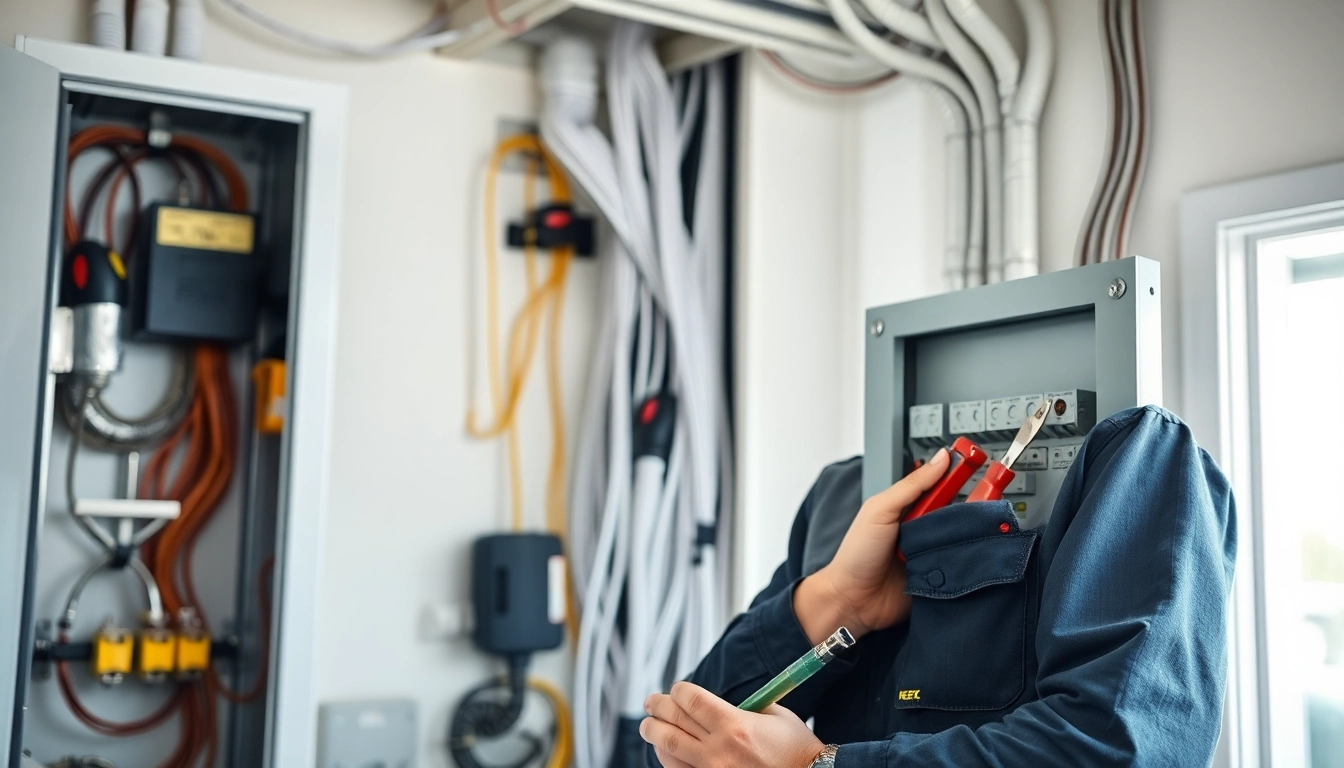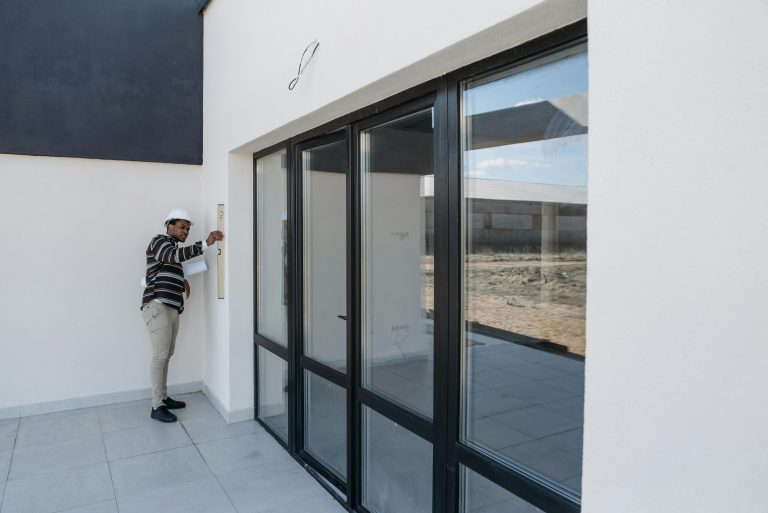
What is an Electrical Panel Upgrade?
Defining Electrical Panels
An electrical panel, often referred to as a breaker box or distribution board, is the central hub of a home’s electrical system. It regulates and distributes electricity throughout the residence while ensuring safety by preventing overloads that can lead to short circuits or fires. The panel receives power from the utility company and divides it into circuits, directing the appropriate amount of electricity where needed. Understanding the functionality of an electrical panel is crucial for homeowners, especially regarding capacity, safety, and efficiency.
Signs Your Panel Needs an Upgrade
Recognizing when to upgrade your electrical panel can prevent larger issues down the road. Here are some common signs that indicate your panel may need an upgrade:
- Frequent Circuit Breaker Trips: If you notice circuit breakers tripping frequently, it could indicate that the electrical demands are exceeding the capacity of your panel.
- Flickering Lights: Flickering or dimming lights, especially when using multiple appliances, suggest that the panel isn’t handling the load efficiently.
- Burning Smell: Any unusual smells, particularly burning or melted plastic, indicate serious issues that must be addressed immediately.
- Old Age: If your panel is over 20 years old, it may not comply with modern electrical standards or safety regulations.
- Additions to Electrical Demand: Increases in electrical usage, such as new appliances, home offices, or electric vehicles, might necessitate a panel upgrade.
Common Electrical Panel Types
Understanding the types of electrical panels available can aid in making informed decisions during an upgrade. The main types include:
- Fuse Box: An outdated system that uses fuses instead of circuit breakers, typically found in houses built before the 1960s.
- Breakers Panel: The most common panel today, using resettable circuit breakers. They come in various amperage ratings, typically between 100 and 200 amps.
- Smart Panel: An advanced version that allows real-time monitoring of electricity usage and can be integrated with smart home technology.
Benefits of Upgrading Your Electrical Panel
Increased Electrical Capacity
One of the primary benefits of upgrading is the increase in electrical capacity. Modern homes often require more power than older panels can handle, especially with the rise of various electronic devices. Upgrading from a 100-amp panel to a 200-amp panel allows for a greater distribution of electricity, supporting more circuits and appliances simultaneously. This increased capacity is essential for homeowners planning to add high-demand appliances such as electric vehicle chargers or central air conditioning systems.
Improved Safety Features
Upgrading your panel enhances safety features. Older panels often lack modern circuit breakers that can trip instantly during overloads. Newer panels incorporate advanced technology, such as ground fault circuit interrupters (GFCIs) and arc fault circuit interrupters (AFCIs), which can detect hazardous electrical conditions and shut off power before accidents occur. This added safety can dramatically reduce the risk of electrical fires and injuries.
Future-Proofing Your Home
With emerging technologies and increasing electrical demands, future-proofing your home is more vital than ever. An upgraded electrical panel can accommodate the latest systems, such as solar panels, smart home devices, and higher-capacity charging stations for electric vehicles. Homeowners planning for renovations or expansions will find that an upgraded panel makes these projects more feasible and efficient.
The Electrical Panel Upgrade Process
Initial Assessment by Professionals
Before proceeding with an electrical panel upgrade, consulting a certified electrician is crucial. They will conduct a thorough assessment of your current electrical system, identifying any safety issues, capacity limits, and the overall condition of the wiring and panel. This initial evaluation will help determine the necessity of an upgrade and guide you in making informed decisions.
Choosing the Right Panel Size
When considering an upgrade, choosing the right panel size is essential. The size is typically measured in amperage, commonly found in 100, 150, and 200 amps. A larger amperage panel will provide ample capacity for current and future electrical needs. It is vital to consult with your electrician on the correct sizing based on your home’s square footage, number of appliances, and lifestyle requirements.
Permits and Regulations
Electrical work, including panel upgrades, often requires permits and must adhere to local regulations. Failure to obtain the necessary permits can result in fines or complications in the event of a home sale. A qualified electrician will help navigate the permitting process and ensure compliance with local codes, ensuring that your installation meets safety standards.
Financial Aspects of an Electrical Panel Upgrade
Cost Breakdown and Budgeting
Upgrading an electrical panel can range in cost from $800 to $4,000, depending on various factors, including panel type, location, and labor rates. On average, electricians charge between $50 to $120 per hour, and the panels themselves can cost between $100 to $500. Homeowners should budget for additional costs related to permits, inspections, and potential repairs to bring the wiring up to code during an upgrade.
Potential Savings from Upgrades
While the initial investment in an electrical panel upgrade might seem daunting, it can offer significant savings over time. With a new panel, homeowners can expect:
- Lower Energy Bills: Modern panels optimize electricity use, which can translate to reduced energy costs.
- Increased Home Value: An upgraded electrical system can enhance the resale value of a home, making it more attractive to potential buyers.
- Lower Insurance Premiums: Some insurance companies offer discounts for homes with updated electrical systems, potentially saving homeowners money on premiums.
Tax Credits and Incentives
Homeowners upgrading their electrical panels may be eligible for tax credits or incentives. It’s advisable to check current federal and state programs that may offer credits for energy efficiency improvements, including electrical system upgrades. For example, Electrical Panel Upgrades may qualify for rebates through various energy efficiency programs, so it’s beneficial to research available options thoroughly.
Common Mistakes to Avoid When Upgrading
Choosing the Wrong Capacity
A frequent mistake homeowners make is selecting a panel with insufficient amperage. While a 100-amp panel may suffice for a smaller home or fewer appliances, larger homes and newer electrical demands necessitate a minimum of 200 amps. Always base your selection on current and anticipated electrical usage to avoid costly re-upgrades.
Ignoring Local Codes and Regulations
Neglecting local electrical codes and regulations can lead to subpar installations or enforcement penalties. Always consult with a licensed electrician to ensure your installation meets local codes and standards. An electrician will be acquainted with regional requirements, helping to avoid any issues that could arise during inspections.
DIY Mistakes to Prevent
While some homeowners may consider a DIY approach to save costs, electrical work can be complicated and hazardous. Incorrect installations can lead to serious safety issues, including fires or electrocution. Always prioritize safety and engage a qualified professional for panel upgrades to ensure compliance and optimal performance.






